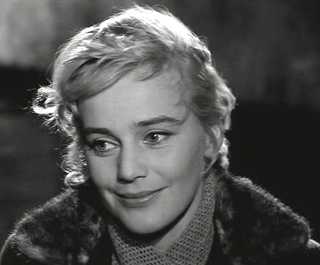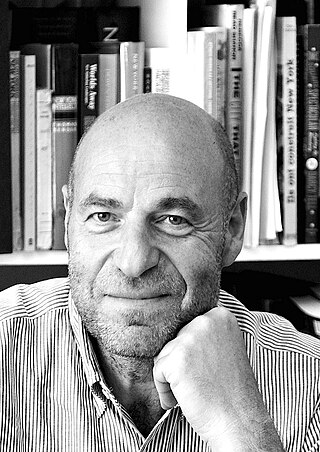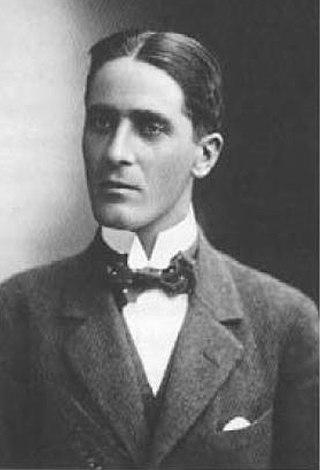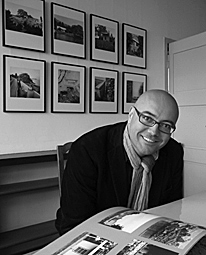Related Research Articles

Charles-Édouard Jeanneret, known as Le Corbusier, was a Swiss-French architect, designer, painter, urban planner and writer, who was one of the pioneers of what is now regarded as modern architecture. He was born in Switzerland to French speaking Swiss parents, and acquired French nationality by naturalization on 19 September 1930. His career spanned five decades, in which he designed buildings in Europe, Japan, India, as well as North and South America. He considered that "the roots of modern architecture are to be found in Viollet-le-Duc".

Richard Meier is an American abstract artist and architect, whose geometric designs make prominent use of the color white. A winner of the Pritzker Architecture Prize in 1984, Meier has designed several iconic buildings including the Barcelona Museum of Contemporary Art, the Getty Center in Los Angeles, the High Museum of Art in Atlanta, and San Jose City Hall. In 2018, some of Meier's employees accused him of sexual assault, which led to him resigning from his firm in 2021.

Switzerland lies at the crossroads of several major European cultures. Three of the continent's major languages, German, French and Italian, are national languages of Switzerland, along with Romansh, spoken by a small minority. Therefore, Swiss culture is characterized by diversity, which is reflected in a wide range of traditional customs. The 26 cantons also account for the large cultural diversity.

Maria Margarethe Anna Schell was an Austrian-Swiss actress. She was one of the leading stars of German cinema in the 1950s and 1960s. In 1954, she was awarded the Cannes Best Actress Award for her performance in Helmut Käutner's war drama The Last Bridge, and in 1956, she won the Volpi Cup for Best Actress at the Venice Film Festival for Gervaise.

Werner Seligmann was an architect, urban designer and educator.
Albert Frey was a Swiss-born architect who established a style of modernist architecture centered on Palm Springs, California, United States, that came to be known as "desert modernism".

Louise Catherine Breslau was a German-born Swiss painter, who learned drawing to pass the time while bedridden with chronic asthma. She studied art at the Académie Julian in Paris, and exhibited at the salon of the Société Nationale des Beaux-Arts, where she became a respected colleague of noted figures such as Edgar Degas and Anatole France.
Sigfried Giedion was a Bohemian-born Swiss historian and critic of architecture. His ideas and books, Space, Time and Architecture, and Mechanization Takes Command, had an important conceptual influence on the members of the Independent Group at the Institute of Contemporary Arts in the 1950s. Giedion was a pupil of Heinrich Wölfflin. He was the first secretary-general of the Congrès International d'Architecture Moderne, and taught at the Massachusetts Institute of Technology, Harvard University, and the ETH-Zurich.
José R. Oubrerie was a French architect, educator, and author. He was a protégé of Le Corbusier.

The Villa Jeanneret-Perret is the first independent project by Swiss architect Le Corbusier. Built in 1912 in La Chaux-de-Fonds, Charles-Edouard Jeanneret's hometown, it was designed for his parents. Open to the public since 2005, the house is under the patronage of the Swiss National Commission for UNESCO and has been proposed by the Swiss Government for inscription on the World Heritage List.

Junzo Sakakura was a Japanese architect and former president of the Architectural Association of Japan.

The Pavillon Le Corbusier is a Swiss art museum in Zürich-Seefeld at Zürichhorn dedicated to the work of the Swiss architect Le Corbusier. In 1960, Heidi Weber had the vision to establish a museum designed by Le Corbusier. The building was to exhibit his works of art in an ideal environment created by the architect himself. It was then named the Centre Le Corbusier or Heidi Weber Museum. In April 2014 the building and museum went over to the city of Zürich, and was renamed in May 2016.
Erich Schelling was a German architect.

Jean-Louis Cohen was a French architect and architectural historian specializing in modern architecture and city planning. Since 1994 he had been the Sheldon H. Solow Professor in the History of Architecture at New York University Institute of Fine Arts.

Charles Knevitt was a British journalist, author, broadcaster, curator and playwright, and former Architecture Correspondent of the Sunday Telegraph (1980–84) and The Times (1984–91). In 2016 he was made an Honorary Fellow of the RIBA for his contribution to architecture.
The architecture of Switzerland was influenced by its location astride major trade routes, along with diverse architectural traditions of the four national languages. Romans and later Italians brought their monumental and vernacular architecture north over the Alps, meeting the Germanic and German styles coming south and French influences coming east. Additionally, Swiss mercenary service brought architectural elements from other lands back to Switzerland. All the major styles including ancient Roman, Romanesque, Gothic, Renaissance, Baroque, Neoclassical, Art Nouveau, Modern architecture and Post Modern are well represented throughout the country. The founding of the Congrès International d'Architecture Moderne in La Sarraz and the work of Swiss-born modern architects such as Le Corbusier helped spread Modern architecture throughout the world.

Raoul Albert La Roche was a Swiss banker and art collector. He was especially interested in purism and cubism and his collections have been donated to museums in Switzerland and France. His home in Paris, Maison La Roche, was designed by his friend Le Corbusier and now houses the Le Corbusier Foundation.

Patrick Moser is a Swiss writer, translator, art historian, and museologist. He is the founder and curator of the Museum "Le Lac" Le Corbusier.

The Moos family respectively von Moos family is a Swiss patrician noble family originally hailing from the Canton of Uri which has been settled in Lucerne, Switzerland since the 14th century. The most prominent branch where steel industrialists and owners of the Von Moos Steel Works in Lucerne. Today the name is still used by one of the descendants in manufacturing of fine writing instruments.
References
- ↑ "Home".
- ↑ "Erich Schelling Architecture Award | Architecture Scope". www.architecturescope.com. Archived from the original on 7 March 2014.